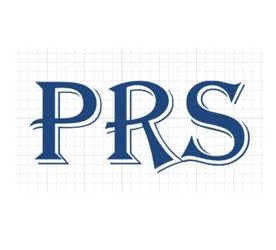This past weekend featured the 2024 Mexican Junior National tournament in Monterrey, Mexico. Mexico is the last of the “big 3” North American countries to hold its Junior Nationals, and the results of these events determine the national team members that will represent their country at the upcoming World Juniors in Guatemala in Late November/Early December.
Here’s a quick recap of the qualifiers and some commentary.
Mexican Junior tournament and qualification goes as follows: the entrants play a double elimination draw; the winner of the winner’s bracket is the champion and Junior National titlist, while the winner of the loser’s bracket is the 2nd player to join the delegation. This consolation bracket champ often is not the winner’s bracket finalist, and the format gives players hope of getting back on the team even with an early loss (read down for more). Mexico does not play any official doubles competitions at its junior nationals; the singles qualifiers will form the doubles teams at Worlds (unless something’s changed this year, because they played a full set of Mixed doubles divisions but not gender doubles.).
R2 site for 2024 Mexican Jr Nationals: https://www.r2sports.com/tourney/home.asp?TID=42398
Congrats to the following Boys singles finalists for team Mexico:
(click here https://rball.pro/olf for a Matrix of all Mexican boy’s titlists loaded into the database currently, dating to 2012)
– Boys 21U: Sebastian Hernandez & Erick Trujillo.
– Boys 18U: Jorge Gutierrez & Eder Renteria
– Boys 16U: Nicholas Galindo & Sebastian Ruelas
– Boys 14U: Brian Axel Sanchez & Santiago Castillo
– Boys 12U: Max Soto & Alejandro Robles Picon
– Boys 10U: Kerman Damian Gracia & Santiago Gullen
– Boys 8U: Daniel Alejandro Ayala & Yacu Hernandez
– Boys 8Udb: Enrique Rivera & Massimo Loretto Bustillo
Commentary on the older divisions:
Boys 21U gave us a big surprise early, as #2 seed and 10th ranked IRT player @Erick Trujillo was shocked by little-known @Christhian Sanchez in the opening round, knocking him from title contention. Sanchez then topped Luis Renteria (who was on the 18U team last year) to open some eyes before falling to Hernandez. Last year’s champion and #1 seed Diego Gastelum cruised to the final but was topped by 2022 18U champ @Sebastian Hernandez. Gastelum then got knocked out by Trujillo for the second team spot in the consolation final; Trujillo won 7 straight loser’s bracket matches to secure his spot in Guatemala.
Boys 18U featured a repeat winner in @Jorge Gutierrez, who did not drop a game and won the final 2,4,2. It’s the fourth straight junior national title for Jorge, to go along with several junior world titles. Gutierrez might be better than any of the 21U players right now, but has just one IRT appearance (in 2022 as a 16yr old). Lets hope he can find his way to some pro events soon. Eder Renteria , who owns 6 mexican junior titles himself. secured the 2nd national team spot as he moves up to 18U.
Boys 16U’s champ Nicholas Galindo hadn’t won a junior title in Mexico since 2016, but lived up to his seeding and knocked off last year’s champ and #1 seed
Sebastian Alejandro Ruelas in the final. Ruelas salvaged the second national team spot by taking the consolation bracket.
Bryan Axle Sanchez repeated in 14U. In 12U, Max Soto moved up from 12U to take the crown. Interestingly, four-time USA junior national champ Alejandro Robles Picon competed in Mexico and secured the second 12U national team spot. He won USA’s 12U last year. In 10U, Kerman Damian Gracia wins his 2nd junior title. New winners were had in both 8U and 8Udb.
—-
Congrats to the following Girls Singles finalists for team Mexico:
(click here: https://rball.pro/qcm for a Matrix of all Mexican Girls’s titlists loaded into the database currently, dating to 2012)
– Girls 21U: Ivanna Balderama & Angela Veronica Ortega
– Girls 18U: Yanna Salazar & Cynthia Gutierrez
– Girls 16U: Miranda Bazzara & Andrea Perez Picon
– Girls 14U: Danna Portillo & Danna Hernandez
– Girls 12U: Grissel Gómez Rubio & Michelle Gomez
– Girls 10U: Lia Montserrat Gonzalez Perez & Lia Medrano
– Girls 8Udb: Jocelyn_Dominguez_Chavez & Andrea_Carrasco
Commentary on the older divisions:
21U sees a changing of the guard, as 2-time defending champ Maria Gutierrez ahs aged out, and last year’s finalist and #1 seed Leonela Osorio failed to secure one of the two spots. Instead they go to @Ivanna Balderrama , who moved up to 21U for the first time this year and who hadn’t won a junior title since 2019. The 2nd spot goes to frequent LPRT tour player @AAngela Veronica Vera Ortega .
In 18U, defending champ Cynthia Gutierrez was upset by rising 17yr old @Yanna Salazar , runner-up last year in 16U. Salazar topped Gutierrez both in the round robin stage and then again for the title. Last year’s 16U title winner Trujillo failed to secure a team spot as she moved up to the competitive 18U division.
In 16U, Miranda Bazzara, the 14U titlist two years ago, took the division as the #1 seed. In the semis she took out last year’s 14U champ Farias, and then in the final, she topped Andrea Perez Picon, who like her brother is switching to represent Mexico for now, or for this year (if they have dual citizenship, they can continue to play for/represent either country I believe).
in 14U, last year’s finalist Danna Portillo went a step further and secured the title. In 12U, Grissel Gomez Rubio dethroned the defending champ Michelle Gomez. Lastly we got new winners in 10U and 8U divisions for Mexico.
———————–
Congrats to all the Mexican Junior National title winners for 2024, and congrats to the National team qualifiers as well.
Congrats to Favio Soto for another successful Mexican national tournament.
International Racquetball Tour
@LPRT
Federación Mexicana de Raquetbol
International Racquetball Federation – IRF






